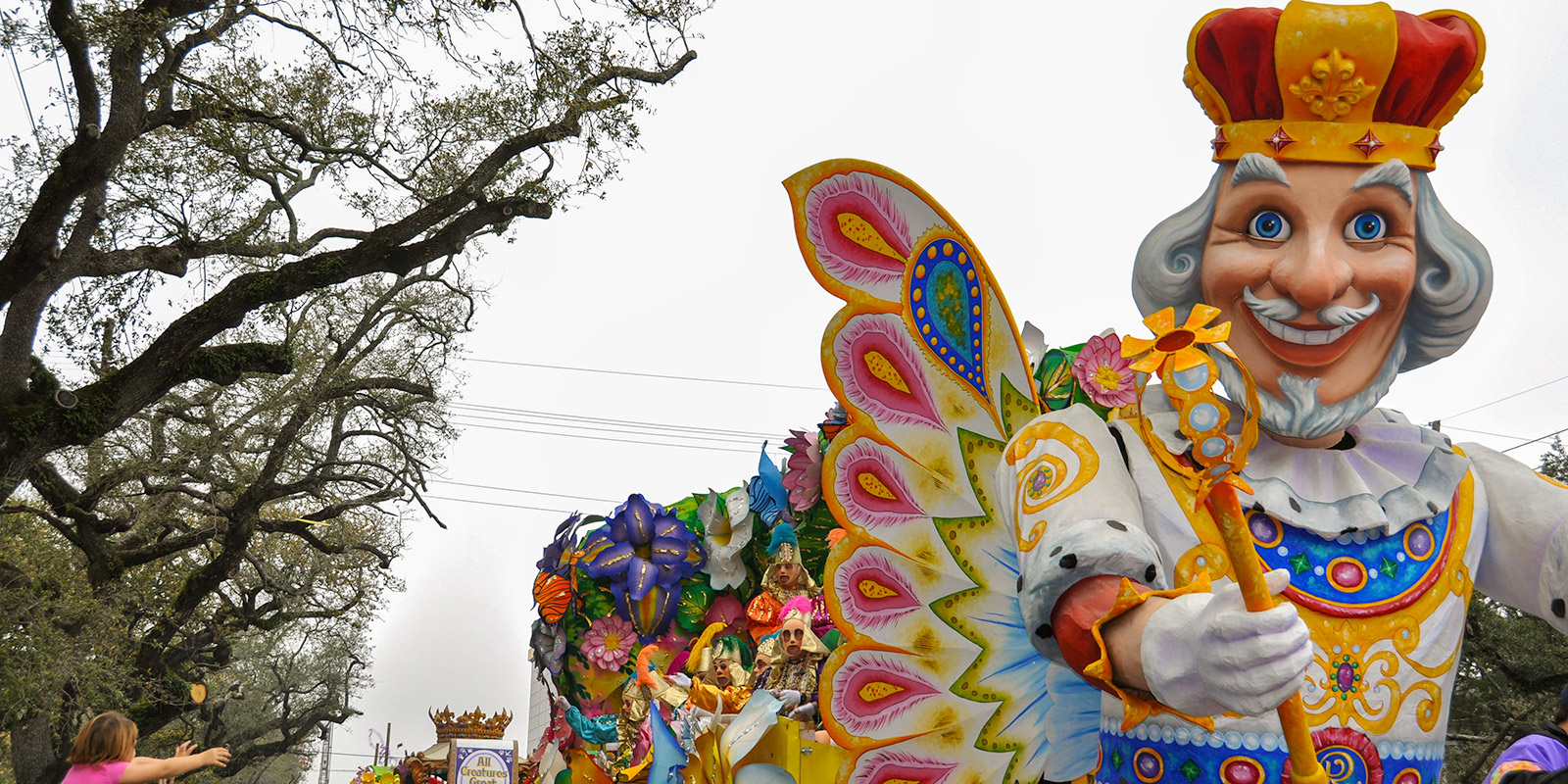Fit for a King:
The Rex Archives at the Historic New Orleans Collection
To mark the 150th anniversary of the founding of the Rex Organization, this exhibition, running through May 8, showcases jewels, favors, doubloons, float designs and more from the Historic New Orleans Collection’s impressive treasure trove.
Court accoutrements, imaginatively conceived and meticulously rendered by gifted designers and artisans, were key to creating a fanciful kingdom worthy of the King of Carnival. By the time of its second pageant, in 1873, the Rex Organization had adopted a coat of arms featuring two crowns, scepters and robes trimmed in ermine, as well as Hercules with his club and Zeus with his thunderbolts, thereby establishing, if not direct lineage, a connection to mighty gods of myth. (Rex mythology maintains that the King of Carnival resides on the ancient abode of the gods, Mount Olympus, and descends each year to journey to New Orleans to preside as over his earthly kingdom of merriment.)
Perhaps the earliest form of Carnival jewlery was the ducal pin, worn by members of the Rex and resembling the crest-like badges worn by European royalty. They were, and still are, manufactured with a new design every year, making them highly collectible. They’re worn as a medallion during the parade, hanging from members’ necks on a striped ribbon in purple, green and gold, and pinned on their tuxedo coats at the Rex ball. Each year, a member has the option of bestowing on a lucky recipient the gift of a ducal pin, to be worn mainly during the Carnival season. There’s also a ladies’ version of the pin.
Early ducal pins were made in Europe along with crowns, scepters and even some of the more elaborate ball invitations, featuring three-dimensional die-cut designs. In the 1890s, the School of Design — the incorporated name for the Rex krewe — began creating favors for those attending its ball. Items such as pin cushions, jewelry boxes, mirrors and letter openers were emblazoned with the Rex emblem and given out with admit cards to the ball. Featuring graphic designs that often rose to the level of fine art, these cards, along with ball invitations, programs and dance cards, would become highly prized by collectors of Carnival memorabilia.
Enterprising merchandisers sought to cash in on the popularity of Rex as a symbol of the entire Carnival celebration. Many of the keepsakes Carnival visitors took home carried “the emblems and images of the King of Carnival,” according to Rex: An Illustrated History of the School of Design by Stephen W. Hales.
Spectators of early Carnival parades didn’t beg for “throws,” as there were none to be had. “Old photographs reveal that this quickly changed when Rex riders threw trinkets to the crowd in 1921,” writes Hales. “Throw me something, Mister!” became a Carnival mantra. The first doubloon, made of plain aluminum and designed by engraver Alvin Sharpe for Rex, created a frenzy when introduced at the krewe’s 1960 parade, as spectators thought they were being showered with money. Before long, nearly every Carnival parading organization followed suit, and collections of treasured throws overflowed with doubloons.
To be sure, Rex played a leading role in the creation and evolution of Carnival keepsakes and mementoes. The Fit for a King exhibition promises plenty of choice “bling” from His Majesty’s realm.
The exhibition — on the 2nd floor of the Historic New Orleans Collection’s Williams Research Center, at 410 Charters Street in the French Quarter — is open Tuesday-Saturday, 9:30 am-4:30 pm. Admission is free.
MardiGrasTraditions.com

